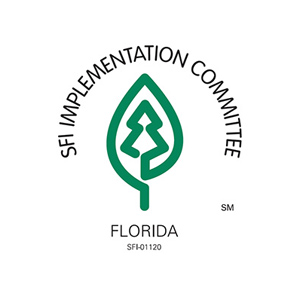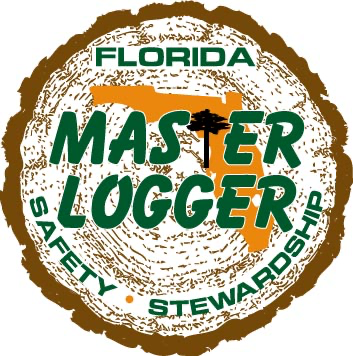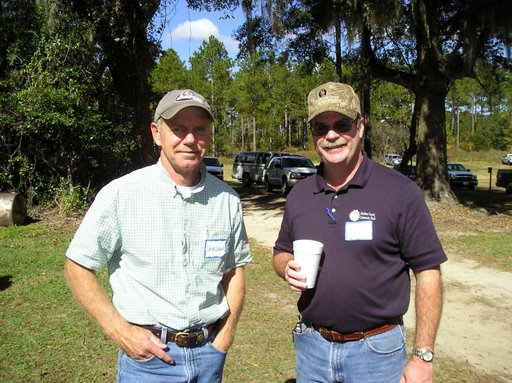As owners, managers, and stewards of natural resources, we talk often of the resiliency and ability of natural systems to recover from disasters like hurricanes and wildfires. However, as we collectively navigate another challenge in the form of COVID-19, it is apparent that the people that make up our forestry industry have a similar resiliency. Over the past twenty months we have experienced pressures on our industry that are unprecedented beginning with the onslaught of Hurricane Michael in October 2018 and continuing now with the current pandemic. The weeks and months following Hurricane Michael were filled with uncertainty and confusion, but ultimately we forged a path forward with confidence that our working forests were important and meaningful enough to restore. While the recovery effort is far from over, efforts continue in earnest to restore full functionality to these working lands. Assuredly, the resolute people of our industry will confront the current pandemic with the same perseverance that has allowed us to overcome the challenges of the past.
To that end, Southern Forestry Consultants (SFC) and Wiregrass Ecological Associates (WEA) are proud to share the letter below sent to leaders in Washington and endorsed by members of the Legislature pushing the inclusion of the Forest Recovery Act in legislation addressing COVID-19 relief. SFC and WEA feel this is a product of the tremendous effort by the agricultural industry in general, and specifically our forestry industry, to educate our lawmakers about the financial aspects and subsequent implications of the long-term investment in timber.
While this letter alone may not result in monumental changes for the forestry industry, it is symbolic of the policy changes that our collective effort will continue to target. To that end, SFC and WEA want to take this opportunity to extend our gratitude to our clients, partners, and colleagues who have dedicated their time and resources on behalf of our industry. Furthermore, we want you all to know that we will continue to stand with you in this effort through our participation and leadership in national organizations like the Society of American Foresters and state level Forestry Associations, Farm Bureaus, and Forest Landowner Associations across the Southeast.
We will continue to face challenges as we move forward, but with a resilient group of people grounded in the natural resources entrusted to our care, SFC and WEA are confident our industry will continue to thrive and produce the many products, environmental services, and outdoor opportunities that benefit all of society.
FRA and COVID-19 Letter to Leaders in Washington

 Loggers earn their Florida Master Logger certification by completing this workshop which includes modules on safety, business management, and environmental regulations. George Fullerton, WEA Senior Biologist, presented about logging considerations for imperiled species in Florida. His program discussed the history and status of environmental regulations in US and Florida, detailed descriptions of imperiled plant and animal species and critical habitats in Florida, best management practices and regulations for interacting with these species and their habitats, potential future listings and legal challenges, and the value of logger’s efforts towards biodiversity and conservation. This opportunity to address loggers is valuable because the SFI Principles call upon every program participant to meet market demands while complying with applicable laws and agreeing to use environmentally responsible practices that promote the protection of biodiversity, wildlife, plants, soil, water, and air quality. WEA has presented environmental modules during this Master Logger training workshop since 2016.
Loggers earn their Florida Master Logger certification by completing this workshop which includes modules on safety, business management, and environmental regulations. George Fullerton, WEA Senior Biologist, presented about logging considerations for imperiled species in Florida. His program discussed the history and status of environmental regulations in US and Florida, detailed descriptions of imperiled plant and animal species and critical habitats in Florida, best management practices and regulations for interacting with these species and their habitats, potential future listings and legal challenges, and the value of logger’s efforts towards biodiversity and conservation. This opportunity to address loggers is valuable because the SFI Principles call upon every program participant to meet market demands while complying with applicable laws and agreeing to use environmentally responsible practices that promote the protection of biodiversity, wildlife, plants, soil, water, and air quality. WEA has presented environmental modules during this Master Logger training workshop since 2016. The FFA administers the Master Logger program for the Florida SFI-SIC. The program is designed to enhance the professionalism of loggers through training in safety, timber harvesting, business, and environmental regulations. Following initial training, Master Loggers must complete Continued Logging Education (CLE) credits annually to maintain their certification.
The FFA administers the Master Logger program for the Florida SFI-SIC. The program is designed to enhance the professionalism of loggers through training in safety, timber harvesting, business, and environmental regulations. Following initial training, Master Loggers must complete Continued Logging Education (CLE) credits annually to maintain their certification.
 Southern Forestry Consultants (SFC) is excited to announce that Ashley Farms, owned by Don Ashley and Theo Meadows, has been recognized as the 2020 Jon Gould Florida Outstanding Tree Farmer of the Year. This award is presented annually by the Florida Tree Farm Program, a non-profit organization, and the state affiliate of the American Tree Farm System (ATFS). Our SFC team in Monticello, Florida assists Ashley Farms with forest and wildlife management, a relationship maintained for over 25 years.
Southern Forestry Consultants (SFC) is excited to announce that Ashley Farms, owned by Don Ashley and Theo Meadows, has been recognized as the 2020 Jon Gould Florida Outstanding Tree Farmer of the Year. This award is presented annually by the Florida Tree Farm Program, a non-profit organization, and the state affiliate of the American Tree Farm System (ATFS). Our SFC team in Monticello, Florida assists Ashley Farms with forest and wildlife management, a relationship maintained for over 25 years.